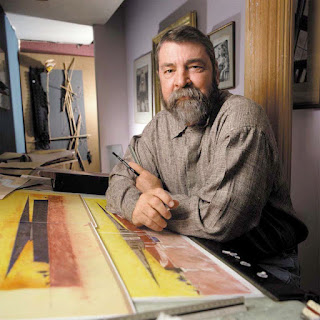Extreme Birding
Part of push to bring tourists back to region 5 miles from Marion
THOMAS SPENCER News staff writer
 |
| Photo by Joe Songer, Birmingham News Photographer |
MARION - Near the Cahaba River, between a bottomland forest and swamp of cypress and tupelo trees, students from Auburn's Rural Studio have erected what is believed to be the tallest birding tower in the United States.
Reaching 100 feet above the forest floor, the former fire tower - cleaned, re-engineered and reassembled on the site - offers a trip to the tree canopy at one of the best birding sites in Alabama.
At its heights, you can hear the rapping of pileated woodpeckers echoing through the swamp and the warning cry of an egret taking flight at the approach of visitors. Three generations of bald eagles nest in a loblolly pine on adjacent land and can sometimes be seen soaring overhead. Ospreys and cranes share the swampy woods and waters with zipping songbirds and flitting butterflies.
Judson College biology professor Thomas Wilson, a frequent visitor to the tower, said birds seem to lose their awareness of humans as you climb into their element. He and other teachers are already using the tower as something of an outdoor classroom.
He recalled an up-close encounter 70 feet up with a bright yellow bird that makes its home in the shadows of the swamp.
''I stared a prothonotary warbler in the throat and watched him sing his song,'' Wilson said.
The tower is the crowning achievement of a multiyear effort to bring back what was a nearly forgotten park on the Cahaba River. It's also part of a push to bring nature tourists to the economically challenged but naturally rich Black Belt region.
Built in 1935
Originally constructed in 1935 by the Civilian Conservation Corps, Perry Lakes Park is five miles from downtown Marion on Alabama 175. The park is about 600 acres, including four oxbow lakes. It borders Barton's Beach, the largest sand and gravel beach on the Cahaba, now in a 125-acre nature preserve owned by the Nature Conservancy.
But access to Perry Lakes Park was cut off for decades. A federal facility, the U.S. Southeastern Fish Cultural Laboratory, was situated on the road to the park, and in 1974, after someone stole a significant stock of fish from the lab, the road was closed.
The federal lab was closed in 1994, and Perry County leaders started working to reopen the park. They enlisted help from state and federal officials, along with community and conservation groups. Judson College and Alabama Power Co. worked to get the federal land deeded to the state and the park restored.
The Nature Conservancy's purchase of the Barton's Beach property was part of that effort. The park officially reopened in May 2002.
For the past several years, seniors in Auburn's Rural Studio program have designed and built a series of thesis projects at the park, all striking and innovative architecture. In all, without counting the students' labor, the Auburn efforts have put about $350,000 worth of structures on the land, most of it raised in donations. First was a community pavilion, then architecturally interesting outhouses.
Another group of Rural Studio students built an 80-foot-long covered suspension bridge over a creek leading to a trail that winds through the woods to the banks of the lake.
Crossing the rusted tin-roofed bridge is like proceeding down the aisle of a church into a primeval wilderness. Cypress-decked walkways lead to the edge of the lakes, where trees hang with Spanish moss. Frogs sing. The flat murky water is intermittently disturbed by mysterious swishes. The lakes are home to fish, alligators, snakes and turtles.
The trail leads to foot of the tower, which is open daily from sunrise to sunset.
From the top of tower, there's the vista of a forested valley cupped by a ring of low hills. The swamp is below. The tops of oaks are on either side. A stand of pines rises to the rear. The steps and landings of the tower are built out of thin planks of naturally rot-resistant cypress.
Volunteers, students
Chris Oberholster, director of conservation for The Nature Conservancy, said the development of the park has been an inspiring partnership. Perry County, the cities of Marion and Uniontown, and local volunteers have worked with Rural Studio students to make the park a destination.
''We are proud to be part of this partnership,'' Oberholster said.
Many people come just to see the architecture, others are drawn for the birding or to the Cahaba at The Nature Conservancy's Barton's Beach.
Drawing those tourists has the potential to stimulate the economy in Perry County, which has one of the highest poverty rates in the state.
Friends of the Perry Lakes project were upset last year when they caught wind of a plan to cut timber on state-owned land that borders Perry Lakes Park. Early reports of the plans raised the possibility that the state Department of Conservation and Natural Resources, which manages the land, would clear-cut timberland near the birding tower.
Barnett Lawley of the state agency said he became involved after hearing those initial reports.
''We are not anywhere close to cutting any timber,'' Lawley said. ''We have set up a group to set up a management plan.''
Lawley said the department was making a priority of developing wildlife tourism beyond the traditional hunting and fishing attractions. The agency also has been working with Gov. Bob Riley's Black Belt Action Commission, which is hoping to improve the region's economy.
The Perry Lakes site is a prime example of the kind of attraction the commission wants to promote.
''If there are any trees cut, it would be for the betterment of wildlife and for birding,'' Lawley said.
EMAIL: tspencer@bhamnews.com

Comments
Post a Comment